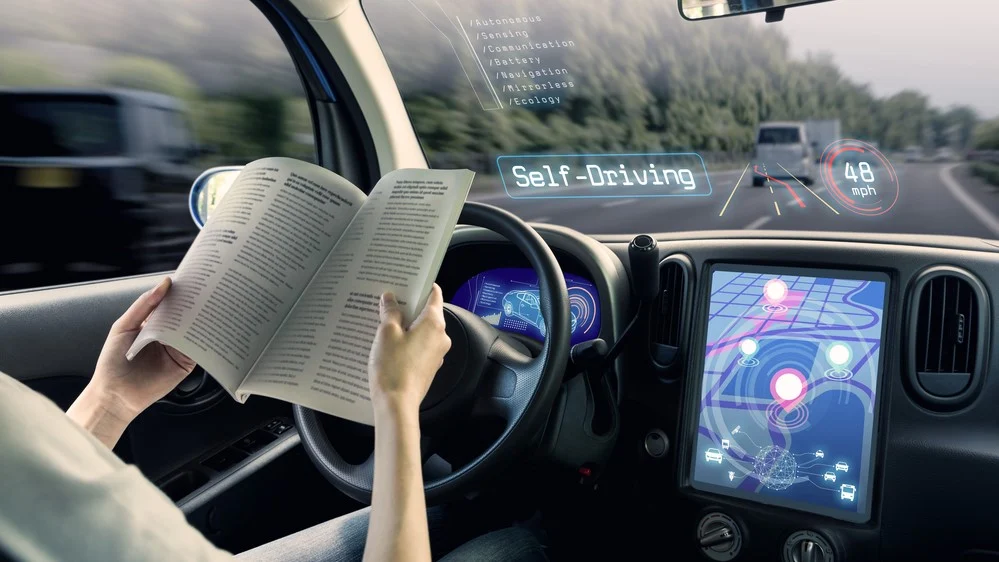The world of transportation is on the brink of a revolution, with autonomous vehicles leading the charge towards a future where self-driving cars are the norm. As technology advances at an unprecedented pace, the question arises: how close are we to full self-driving cars? In this article, we will delve into the latest developments in autonomous vehicle technology, exploring the innovations that are shaping the industry and the challenges that still lie ahead.
Throughout this exploration, readers will gain insights into the various levels of automation, from basic driver assistance systems to fully autonomous vehicles. We will discuss the role of artificial intelligence, machine learning, and sensor technology in enhancing vehicle capabilities. Additionally, we will examine the regulatory landscape and public perception surrounding self-driving cars, which are crucial factors in their widespread adoption.
As we navigate through the complexities of autonomous vehicles, we will highlight real-world applications and pilot programs that are paving the way for a self-driving future. By the end of this article, you will have a comprehensive understanding of where we stand in the journey towards full autonomy and what the future may hold for drivers and passengers alike. Join us as we uncover the exciting advancements in autonomous vehicle technology and what they mean for the future of transportation.
The Evolution of Autonomous Vehicle Technology
The journey towards fully autonomous vehicles has been a remarkable one, beginning with basic driver-assistance systems and evolving into sophisticated AI-driven technologies. Early innovations included features like cruise control and anti-lock braking systems, which laid the groundwork for more advanced capabilities. Over the years, companies have invested heavily in research and development, leading to the emergence of Level 2 and Level 3 automation, where vehicles can handle certain driving tasks under specific conditions.
As we move towards Level 4 and Level 5 automation, the technology has become increasingly complex, integrating sensors, cameras, and machine learning algorithms. These advancements allow vehicles to interpret their surroundings, make decisions, and navigate without human intervention. The evolution of this technology is not just about hardware; it also involves software improvements that enhance the vehicle’s ability to learn from real-world scenarios.
Regulatory Challenges and Legal Frameworks
The deployment of self-driving cars is significantly influenced by regulatory challenges and the need for a robust legal framework. Governments around the world are grappling with how to legislate autonomous vehicles, balancing innovation with public safety. Current regulations often lag behind technological advancements, creating a patchwork of laws that can vary widely from one region to another.
To facilitate the widespread adoption of autonomous vehicles, a comprehensive legal framework is essential. This includes establishing liability in the event of accidents, setting safety standards, and addressing data privacy concerns. As more companies test their self-driving technologies on public roads, it is crucial for regulators to create guidelines that ensure safety while fostering innovation.
Safety and Ethical Considerations
Safety is a paramount concern when it comes to autonomous vehicles. While proponents argue that self-driving cars can reduce accidents caused by human error, critics point out the potential risks associated with technology failures. The challenge lies in ensuring that these vehicles can respond appropriately in complex and unpredictable situations, such as emergency scenarios or interactions with pedestrians.
Ethical considerations also play a significant role in the development of autonomous vehicles. For instance, how should a self-driving car prioritize the safety of its passengers versus pedestrians in unavoidable accident scenarios? These ethical dilemmas require careful consideration and public discourse to establish guidelines that align with societal values.
Public Perception and Acceptance
Public perception of autonomous vehicles is a critical factor in their adoption. While many people are excited about the potential benefits, such as reduced traffic congestion and increased mobility for the elderly, there are also significant concerns regarding safety and reliability. Surveys indicate that a substantial portion of the population remains skeptical about the readiness of self-driving technology.
To build trust, manufacturers and developers must engage with the public, providing transparent information about safety measures and the technology behind autonomous vehicles. Demonstrations, pilot programs, and educational campaigns can help alleviate fears and foster a more positive perception of self-driving cars.
The Role of Artificial Intelligence in Autonomous Driving
Artificial intelligence (AI) is at the heart of autonomous vehicle technology, enabling cars to process vast amounts of data from their surroundings in real-time. Machine learning algorithms allow vehicles to learn from experience, improving their decision-making capabilities over time. This is crucial for navigating complex environments, such as urban areas with unpredictable traffic patterns.
AI also plays a significant role in sensor fusion, where data from various sensors—such as LiDAR, radar, and cameras—are combined to create a comprehensive understanding of the vehicle’s environment. This integration is essential for ensuring that self-driving cars can operate safely and efficiently, even in challenging conditions.
The Impact of Autonomous Vehicles on Urban Planning
The widespread adoption of autonomous vehicles is expected to have profound implications for urban planning and infrastructure. As self-driving cars become more common, cities may need to rethink their transportation systems, including road design, parking facilities, and public transit integration. The potential for reduced traffic congestion and improved mobility could lead to more efficient urban environments.
Moreover, the rise of autonomous vehicles may influence land use patterns, as the need for parking spaces decreases. This could open up opportunities for green spaces, housing, and commercial developments, ultimately reshaping the urban landscape. Planners will need to consider these changes to create sustainable and livable cities in the future.
Economic Implications of Self-driving Cars
The economic impact of autonomous vehicles is multifaceted, affecting various sectors, including automotive manufacturing, insurance, and transportation services. As self-driving technology matures, traditional car ownership models may shift towards shared mobility solutions, such as ride-hailing services. This could lead to a decrease in vehicle sales but an increase in demand for fleet management and maintenance services.
Additionally, the insurance industry will need to adapt to the new landscape, as liability models change with the introduction of autonomous vehicles. Insurers may need to develop new policies that account for the reduced risk associated with self-driving technology, potentially leading to lower premiums for consumers.
Future Trends in Autonomous Vehicle Development
The future of autonomous vehicles is promising, with ongoing advancements in technology and increasing investment from both established automakers and tech startups. Key trends include the integration of 5G connectivity, which will enhance communication between vehicles and infrastructure, and the development of more sophisticated AI algorithms that improve decision-making capabilities.
Moreover, as the technology matures, we can expect to see greater collaboration between automakers, tech companies, and regulatory bodies to create a cohesive ecosystem for autonomous driving. This collaborative approach will be essential for addressing the challenges and opportunities that lie ahead in the journey towards fully self-driving cars.
| Aspect | Details |
|---|---|
| Definition | Full self-driving cars are vehicles that can operate without human intervention, utilizing advanced sensors, cameras, and AI algorithms. |
| Current Levels of Autonomy | Autonomous vehicles are categorized into six levels (0-5) by the SAE. Level 5 represents full autonomy, where no human driver is needed. |
| Technological Advancements | Recent developments in AI, machine learning, and sensor technology have significantly improved the capabilities of autonomous systems. |
| Testing and Deployment | Companies like Waymo, Tesla, and Cruise are conducting extensive testing in urban environments, with some limited commercial services already operational. |
| Regulatory Challenges | Regulations vary by region, and there are ongoing discussions about safety standards, liability, and insurance for autonomous vehicles. |
| Public Perception | Public acceptance is mixed, with concerns about safety, job displacement, and ethical implications of AI decision-making. |
| Future Outlook | Experts predict that while significant progress is being made, widespread adoption of fully autonomous vehicles may still be a decade or more away. |



